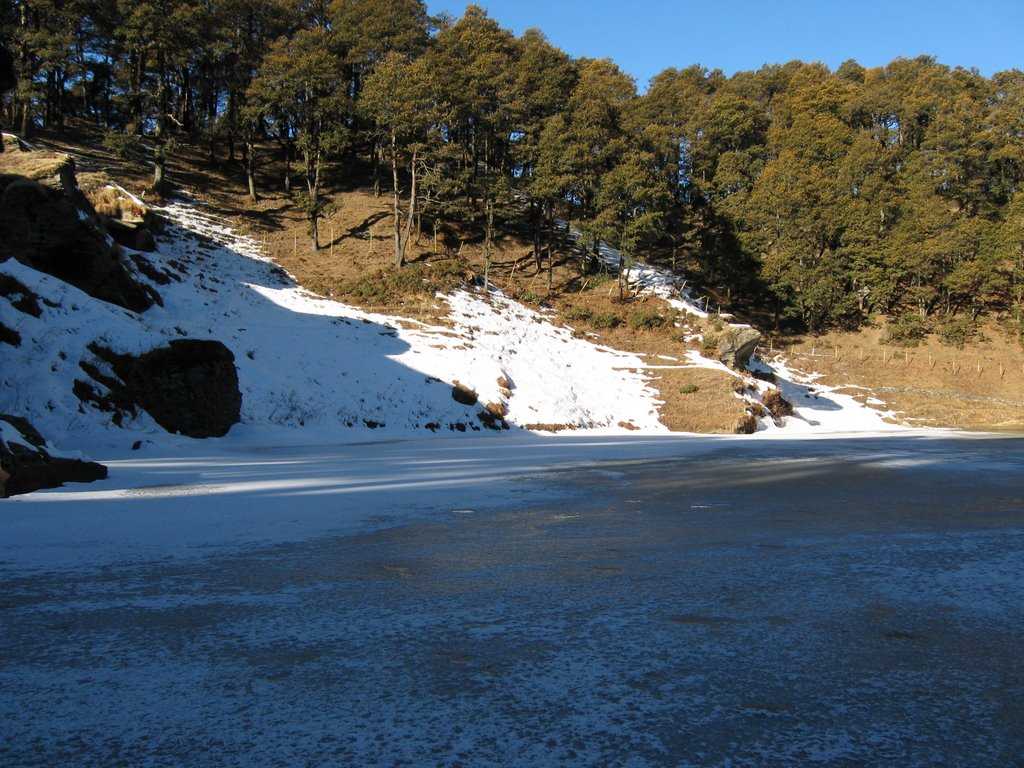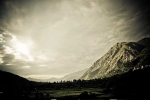Shoja Tourism
Shojha is a small village sitting quietly in the middle of wilderness and panorama. Its untouched beauty might be just the thing that you need to relax and unwind. Located amid the Banjar Valley, the village is dotted with several temples made of wood.
At a mere distance of 5 Kms fromJalori pass, Shojha has pleasant weather throughout the year. With verdant deodar forest covering the area with snow peaked Himalayas hovering on one side, this village is packed with tourist attractions like fort, lake and waterfall. Do visit this place for treasured memories.
Download Shoja PDF Guide >
What's Great?
Lack of motor vehicles makes Shoja completely pollution free. Panoramic view of the snow covered Himalayas.
What's not so Great?
It's a small village with limited options for stay and food. Winters are excruciatingly cold.
For Whom
Shojha is a beautiful getaway for families and a romantic hideout for lovers. Anyone looking to get away from the city life will enjoy their time here.
Explore nature, discover yourself
Shoja makes for an excellent choice for enthralling nature centric experiences. You can trek, learn about wildlife, discover varieties of plants, have a splendid time bird watching or just walk by the beautiful green meadows of the small village. Only 5 km away from Jalori Park, Shoja is a part of the Great Himalayan National Park and has a rich variety of rare species of flora and fauna. In birds, you can find the state bird of Himachal Pradesh Monal here. Other than that, Indian Blue Robin, Nutcracker, White-throated tit and can be spotted here. Plant lovers will be delighted to spot oak, conifer, bamboo, alpine meadows here. In higher altitudes, animals like blue sheep, snow leopard, Himalayan brown bear, musk deer, etc. are found. Sitting around the bonfire under the starlit sky with the cold wind blowing in your hair is an amazing experience in itself.
One Day Itinerary
When you're planning a trip to Shoja, remember to keep aside your itinerary and just go with the flow, enjoy a relaxed holiday in the quietness of Himalayas. A two-day trip should be enough to explore Shojha, however, if you have more time on hand, you could go further to the Tirthan Valley for a trek.
Day 1:Wake up early to catch a glimpse of the rising sun painting the sky with morning colours. Gear up and go for a morning stroll in the village, find a roadside dhaba to get a hot cup of tea. Go back to your hotel, have your breakfast and pack for Tirthan valley. Here, you can trek and have a good time spotting species of plants and herbs. You can also try Trout fishing. If it's your first time, you might want to take a guide along who helps you arrange the gear and identify spots for fishing. You can also just relax and choose to enjoy the mesmerising view. In the latter half, you could head to the waterfall point. A small and easy trek leads here, the way up is a treat. After the long day, you can unwind here while dipping your feet in the water.
Day 2:Start early for Jalori Pass. You can drive up to a point and then trek upwards for about an hour and a half. This place is so beautiful that you will have a great time just by looking at its majestic beauty. 10800ft above sea level, the road which leads to the pass is known to be the bumpiest and hence is a striking challenge for adventure junkies. From the top, the panoramic view of the Himalayas is breathtakingly gorgeous. It is suggested you pack some food while heading forward because of the absence of shops around. Legends have it that this place has been mentioned in epics like Mahabharata and have interesting stories from the past.Close to Jalori, you can head to the Serolsar Lake. The water of the lake is known for its clarity. It is said that one would never find a leaf floating on the lake despite so many trees lining its periphery. It is known for Budhi Naagin temple close by and the stories about her 100 sons who are the guardians of the place. 3 km from Jalori Pass, Raghupur fort is among popular tourist attractions of the village. While not much of the fort is left apart from outer walls, the way towards the fort with the great Himalayas in the backdrop, the way up is surrounded by rhododendrons and green oaks, making the effort for climbing the steep trek absolutely worth it.
Restaurants and Local Food in Shoja
Being small village hidden between the huge Himalayas, it does not offer many options of eating joints. However, you can spot some dhabas here and there. Mostly, the meals are eaten at the hotel you'll be staying at.Make sure you carry some packaged food while going out for sightseeing. You can find a small dhaba near Serolsar Lake, serving hot food and overnight shelter for campers.
Apr-Junis the best time to visit Shoja
The village experiences moderate climate throughout the year. However, the best time to relish the natural beauty and tranquil environment would be the summer season. During June, you can witness the blooming flowers adorning the mountain slopes. The spring and autumn seasons bring with them spectacular views of the majestic Himalayas and Dhauladhar. The winter season experiences nail-biting cold, so try and avoid that season or carry heavy woollens
Weather in Shoja
Loading...
Shoja in Summer (April - June)
April to June is considered the summer months in Shoja. The maximum temperature remains at 30 degrees Celcius while the minimum varies from 5 to 7 degrees Celcius. While the sun shines bright, June is one of the popular tourist months here as the valley is in full bloom and the city crowd makes its way right up to the hills in the hope of relief. Most trekkers prefer this duration for exploring the suburbs owing to the favourable climatic conditions.
Shoja in Monsoon (July - September)
Between July to September, Shoja receives very moderate rainfall. While travelling in the hills may be an issue during monsoon, once here you could have a great time enjoying the sight of the mesmerising beauty of the hills after the fresh shower.
Shoja in Winter (October - March)
Winters are freezing here. During December and January, the temperature at night is known to drop to -5 degrees Celcius. Even in March, when the plains tend to get hot, the maximum temperature here goes up to 9 degrees Celcius. From the past few years, the village has been receiving rainfall in the month of December making it even more chiller. While the view and ambience of this place are spectacular is winters, travellers must come prepared with heavy woollens to be able to have fun in the bone chilling cold.
Monthly Weather in Shoja
Month
Avg. Minimum (°C)
Avg. Maximum (°C)
January
5
18
February
9
24
March
10
28
April
16
35
May
17
35
June
21
37
July
23
32
August
20
30
September
20
32
October
12
29
November
7
26
December
4
21
Comments on Shoja
Post Your Comment


 Waterfall Point
Waterfall Point Jalori Pass
Jalori Pass Serolsar Lake
Serolsar Lake Tirthan Valley
Tirthan Valley Shimla
Shimla Manali
Manali Kasauli
Kasauli Mcleodganj
Mcleodganj Narkanda
Narkanda Chail
Chail